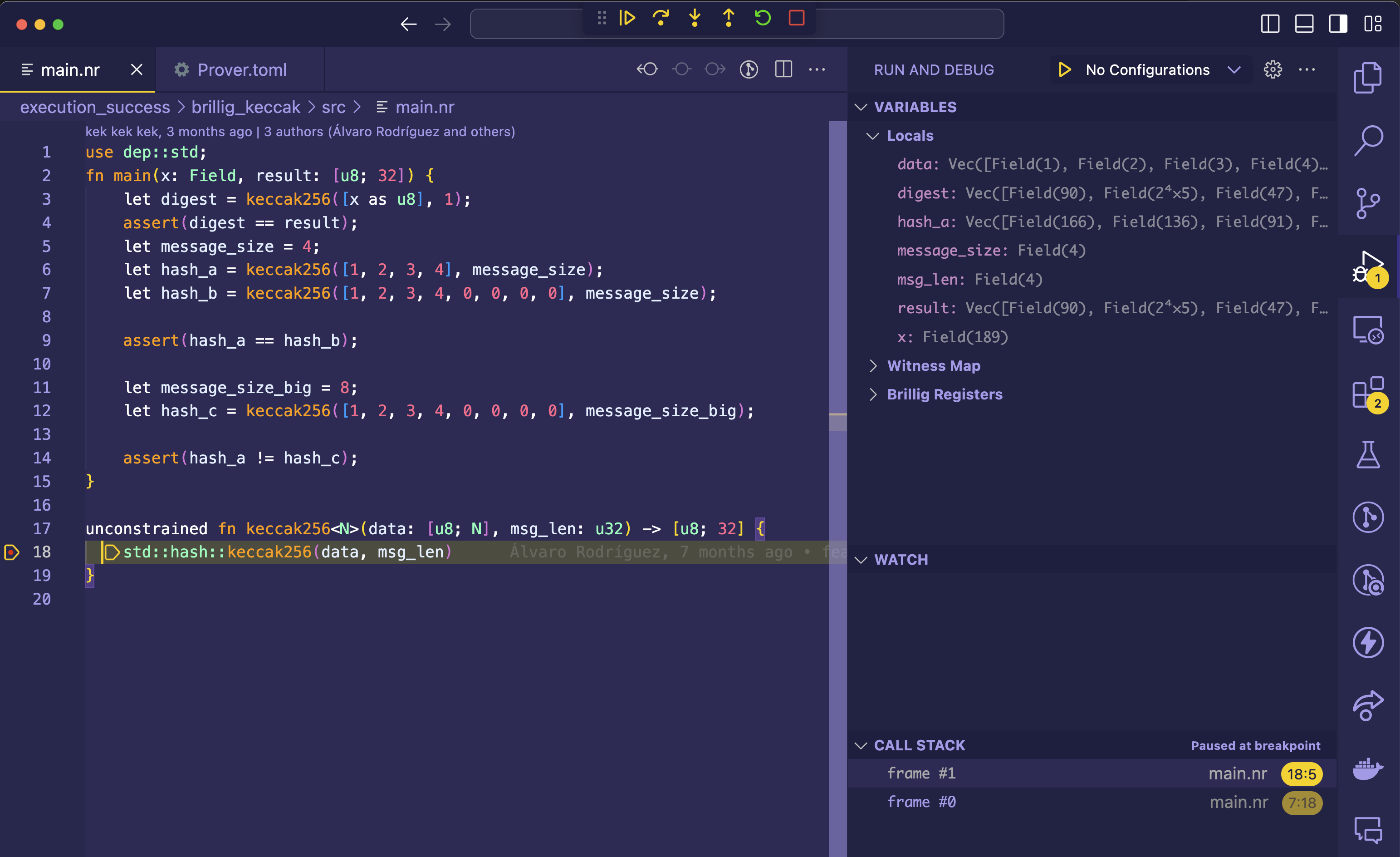Partner
Aztec is building a groundbreaking blockchain platform that prioritizes privacy by design. Their goal is to enable secure, private transactions without exposing user identities or transaction details. To achieve this, Aztec employs Zero-Knowledge Proofs (ZKPs), a cryptographic technique that proves a transaction's validity without revealing its content.
Requirements & Context
To simplify the creation of ZKP systems, Aztec developed Noir, a custom programming language that makes writing these mathematical proofs significantly easier.
While Aztec had successfully built the Noir compiler, developers still lacked a way to debug their ZKP code efficiently. Writing ZKPs is inherently complex, and the absence of debugging tools made development slower, more error-prone, and harder to scale.
They then reached out to Manas.Tech to build a debugger, to allow developers to execute and inspect code step-by-step.
Aztec needed:
- A debugger engine that could execute Noir code line by line.
- A way for developers to introspect variables and track program behavior at every step.
- Seamless integration with developer tools, especially VS Code.
Approach
The project posed unique challenges, due to the intricate nature of ZKP systems. We built a tailored solution to ensure developers could debug Noir with precision and ease.
Step 1: Designing the Debugger Engine
We developed the debugger engine entirely from scratch using Rust, a language known for its speed and reliability. The debugger interacts with Aztec’s existing virtual machine (VM), which executes Noir code.
Our first task was modifying parts of the VM to allow for code introspection: enabling the debugger to observe code execution at every stage.
Step 2: Mapping High-Level Code to Execution
The Noir compiler transforms high-level Noir code into binary bytecode, optimized for the VM to execute. To enable debugging, we created a system that maps text-level variables to low-level code, allowing developers to track variables in their original, human-readable form.
Step 3: Instrumentation for Tracking
We adopted an instrumentation approach, injecting instructions into the compiled program to facilitate variable tracking. This makes it possible for the debugger to report values and execution flow accurately.
Step 4: Building Developer Interfaces
To provide a seamless debugging experience, we developed two interfaces:
- Text Interface: A console application that runs on a command-line mode.
- DAP Integration: Implemented the Debug Adapter Protocol (DAP), allowing the debugger to integrate with popular IDEs, especially Visual Studio Code.
The combination of these tools enables developers to:
- Execute Noir programs line by line.
- Inspect variables and step through code efficiently.
- Debug ZKPs with the same ease as any modern software development workflow.
Results
In just 6 months, we delivered a fully functional debugger that empowers Aztec’s team to develop Noir-based ZKP systems faster and with greater accuracy. Key outcomes include:
- Faster Debugging Cycles: Developers can now pinpoint issues in Noir code quickly and precisely.
- Improved Developer Experience: Seamless integration with IDEs like VS Code reduces friction and increases productivity.
- Ongoing Support: Manas continues to provide maintenance and improvements through a monthly support plan.
Technologies Used:
- Rust: For the core debugger engine.
- JavaScript: For the DAP integration with VS Code.
VS Code Noir Debugger
Noir developers can now debug and inspect their programs using VS Code or a terminal via Nargo.

Impact
By building a robust debugging tool, we helped Aztec remove a significant bottleneck in the ZKP development process. With the Noir debugger, developers can now focus on creating groundbreaking private blockchain solutions without the burden of undetectable bugs or cumbersome workflows.
Next steps
With the debugger fully operational, Aztec’s team can continue to innovate in the ZKP and blockchain space. We remain a committed partner, providing ongoing support to ensure the debugger evolves alongside Noir and Aztec’s ambitious goals.
Open source
This project is Open Source, we invite you to collaborate and join us in the development of a better world through the use of technology.
https://github.com/noir-lang/noirContributors

Gustavo Giráldez Engineering Manager

Ana Pérez Ghiglia Principal Engineer

Martín Verzilli Alumni